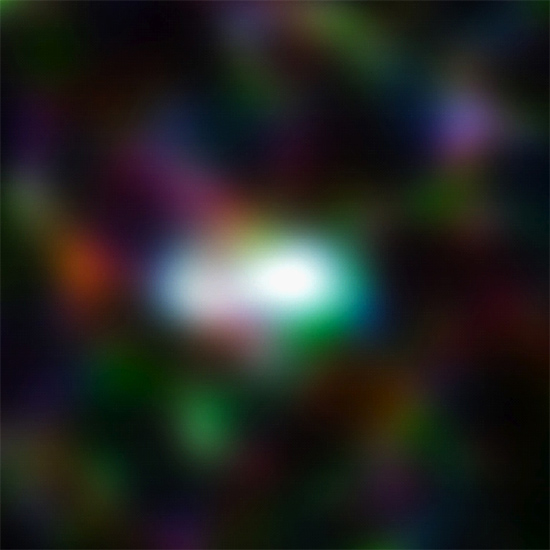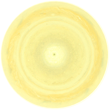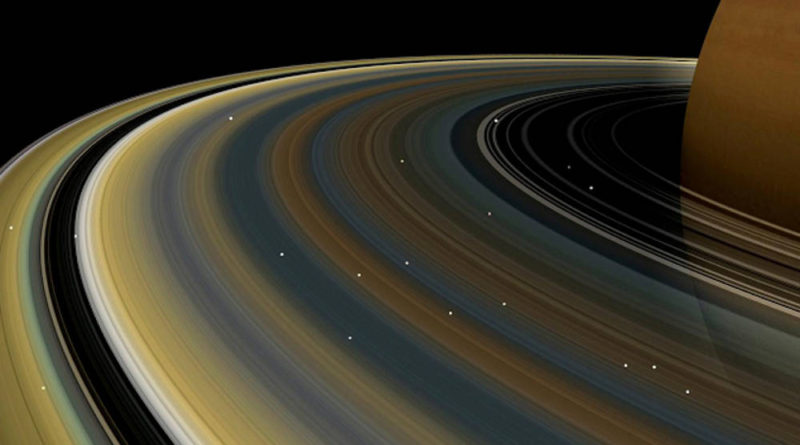The Cassini space probe is flying through Saturn's rings. Are the rings of Saturn very old, perhaps as old as the planets formation itself, or are they very young and being refreshed as we observe them?
A key objective is to determine the mass and therefore the age of the rings. The more massive they are, the older they are likely to be - perhaps as old as Saturn itself ...
We still need to understand the rings' composition. They are made of very nearly pure water-ice. If they're very old, formed at the same time as Saturn, how come they still look so fresh when they're constantly bombarded with meteorite material?
One possibility is that the rings are actually very young, perhaps the remains of a giant comet that got too close to Saturn and broke apart into innumerable fragments.
Nasa waits on Cassini radio contact from Saturn | BBC
Are Saturn's rings very young or old?
 How old the Saturn rings are from data collected will always depend on interpretation and theory.
How old the Saturn rings are from data collected will always depend on interpretation and theory.
Some plasma mythology and solar system cosmogony interpretations suggest that the rings are very young, perhaps their formation even witnessed in the recent past.
Is the ring material fresh from being electrically excavated from Saturn's moons or created in electrochemical reactions between Saturn and the Suns plasma wind?
Update 2 May 2017 - Very, very young Saturn rings?

The first results from Cassini has implied that the rings it initially went through are very thin or lightweight - the 'big empty'.
This could be interpreted, using the logic of the scientists above, to mean that Saturn's rings are very very young.
Using EU theory and comparative mythology perhaps very recent or new, in relationship to humans history and our folklore.
Does it also mean that this particular ring could be made of electrically machined material? Possible electric discharge maching (EDM) of Saturn's moons creating very fine particles?
The American space agency says the Cassini satellite encountered very few particles as it dived between Saturn and its rings last week ... But the latest analysis indicates there were hardly any impacts and those particles the probe did strike were only smoke-sized. "The region between the rings and Saturn is 'the big empty,' apparently,"
Cassini ran through the 'big empty' | BBC
Xaturn

An X-ray image of Saturn and its rings. Credit: NASA/U. Hamburg/J.Ness et al
Nov 30, 2015
Both Saturn’s body and its rings are so electrically active that they shine in X-ray light.
“Saturn is more like the Sun than the Earth.”
— Wal Thornhill
Almost everyone knows that one should not look directly into the flame of an arc welder, since the plasma at the tip is so hot that it emits extreme ultraviolet light, which can damage the retina. Whenever X-rays are used to look inside the body, sensitive areas are shielded because the wavelengths are so energetic that they can ionize soft tissues, possibly destroying them.
It seems that a visit to Saturn might require one to don not only a spacesuit, but one able to withstand fairly hard radiation.
The plasmasphere of Saturn is an electrical environment, causing everything from dark-mode plasma discharges, to gigantic lighting bolts that flash across the ring plane. When the Cassini-Huygens spacecraft got close enough to finally start observing Saturn, planetary scientists were shocked to discover lightning of immense power, up to a million times more powerful than anything on Earth.
However, the 90 megawatts of X-rays coming from the planet were not attributed to its electrical nature. Instead, Saturn’s atmosphere is said to reflect X-rays from the Sun, although the science team admitted when the discovery was made that the intensity of the “reflections” was “surprising.” The reason it was so surprising is that they ignored the fact that planets with magnetic fields can capture ionized particles to form a giant electrifiedmagnetosphere.
In the past, NASA scientists reported that Enceladus, a small moon that orbits within Saturn’s ring plane, causes Saturn’s magnetosphere to bend. According to the report, the effect is due to a flow of electric charge that occurs when particles from Enceladus interact with the magnetosphere of Saturn. A demonstrable electrical effect is occurring between Saturn and Enceladus.
Once conventional science sees the question in electrical terms, the many puzzles with which they are confronted will become clear. The “electric Sun” is what drives the energetic phenomena on Saturn, as well as on its moon Enceladus and the other planets.
Saturn emits more energy than it receives: 2.3 times more, so it is being powered by another source. It is also probable that the interior of the planet has its own heat. There is good evidence that Saturn once existed as an independent body from the Sun. As such, it would have received more energy in the recent past, its power source having since been usurped by the Sun.
Jupiter is similar to Saturn, discharging more energy than it receives from the Sun, although Saturn’s output is greater. One speculation is that super-cooled helium fell out of the atmosphere during Saturn’s formation. The resulting kinetic energy might have warmed up the core. However, the evidence suggests that Saturn was once of greater stature, but has subsequently been dethroned.
According to ancient legends, Saturn occupied a position of prominence in the sky. It was not the tiny pinprick of light that can be seen on dark nights. Rather, it was worshipped as the central luminary, the all-powerful Sun. If that was the case, then its current position in the Solar System is far removed from what it was.
Without going into details that are elaborated elsewhere, that disturbance and rearrangement of planets means that Saturn is the way it is not because of how it was conventionally formed, but because it is closer to being a star than it is to being a planet. Indeed, as our ancestors tell us, it was a star.
Stephen Smith

Thousands of sorted bands in Saturn's rings. Credit: NASA/JPL
Mar 06, 2007
Saturn's Plasma Ring
A toroid of charged particles around Saturn could indicate electrical discharges from the planet.
In a recent press release about Cassini's unusual findings in its exploration of Saturn, NASA officials announced the discovery of "hot particles" surrounding the planet in a toroid, or doughnut-shaped, ring. The most peculiar aspect to their findings was that it is not symmetrical.
"It's curious that Saturn's ring current isn't symmetric," said Don Mitchell, an astrophysicist at Johns Hopkins University who helped examine the images beamed back to Earth. "We think the solar wind is squishing the sunward side of the ring current, kind of like a wind sock."
A similar torus of particles surrounds Earth with electrons moving eastward and positive ions moving to the west. These charged particles are, in reality, plasma and the motion around the Earth constitutes an electric current. The 'doughnut' of plasma around Saturn is the same effect.
According to the press release, planets with magnetic fields can trap hot particles to form giant electrified clouds. However, as we have noted in these pages, from an electric universe perspective, the warm rilles and hot poles of Saturn's moon Enceladus are electrically heated and vapor is being electrically "machined" from where the current flowing through it returns to Saturn's sheath circuit. The oxygen and hydrogen in the water vapor are probably what feeds charged particles into Saturn's plasmasphere.
NASA scientists have noticed the "bending" of Saturn's magnetic field around Enceladus "due to electric currents generated by the interaction of atmospheric particles and the magnetosphere of Saturn." But their blind spot with regard to plasma behavior leads them to insist that the electric currents "don't do anything."
The distortion of the torus on the sunward side indicates that an electrical (not mechanical) effect is occurring between Saturn and the sun. By referring to it as a "wind sock", Cassini mission specialists are betraying their ignorance of electricity in space – especially thecurrents that flow through space-borne plasma.
Electrical theorist Don Scott comments:
"Yes they refuse to acknowledge that moving electrical charges constitute an electric current (there are no 'wind socks' in space). There is a significant density of electrons and ions in 'empty' space however. Magnetic fields do not trap 'hot' particles any better than they do cold particles. When did you ever see a bar magnet attract cigarette smoke, for example? Magnetic fields can only affect streams of electric charges (currents)"
Another of the distinctive features thought to be "mysterious" by the data analysts is a clump of electrified particles synchronized with the planet's rotation.
"Saturn is a big fast rotator. The clump seems loosely hooked to the planet, yet rotates with it," Mitchell said. "It may be connected with Saturn's ring current, but we just don't know. This is something we're working very hard to figure out."
Don Scott comments once more:
"I wish them luck. I do feel they would stand a better chance of it if they would drop the 'wind sock' mindset and begin to recognize how magnetic and electric fields interact with streams of charge. Nearby electric current can distort a magnetic field. A congestion of electric charge may be due to a concentrated electric field along some particular radius vector emanating up from the planet."
Every so often Saturn breaks out with a 'great white spot' three times larger than Earth. Standard models of Saturn and a gravity-only cosmos cannot explain such a periodic outburst, but an intense lightning discharge deep in the atmosphere could cause vertical jets very similar to the sprites in Earth's upper atmosphere. Electrical effects and its connection to the current flow in the solar system can explain most of the effects that Cassini and other science packages have discovered on and around Saturn. As we reported in a previous Thunderbolts Picture of the Day:
"The solar cycle connection explains not only the changes in lightning patterns on Saturn, but also the expanded magnetosphere and the (now) missing spokes. The higher electrical stress throughout the solar system in 1980/1981 would have compressed Saturn's magnetosphere and created the dark spokes. (The spokes revolved to the tune of Saturn's magnetic field rather than to gravity's rules, suggesting they were electrical discharges across the rings. And each separate spoke began when Saturnian "dawn" reached the longitude associated with the long-lasting equatorial storm.) The lower stress of solar minimum allows the magnetosphere to relax, the spokes to fade, and the "storms" to migrate toward higher latitudes."
By Stephen Smith


